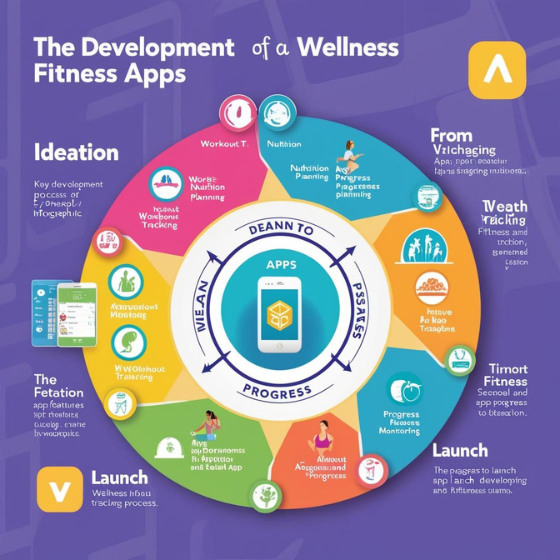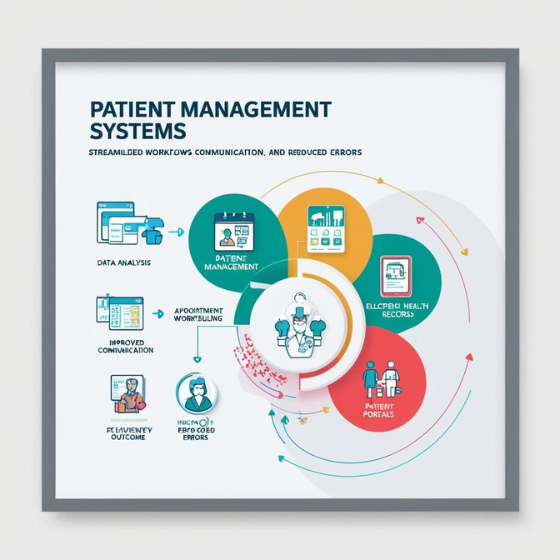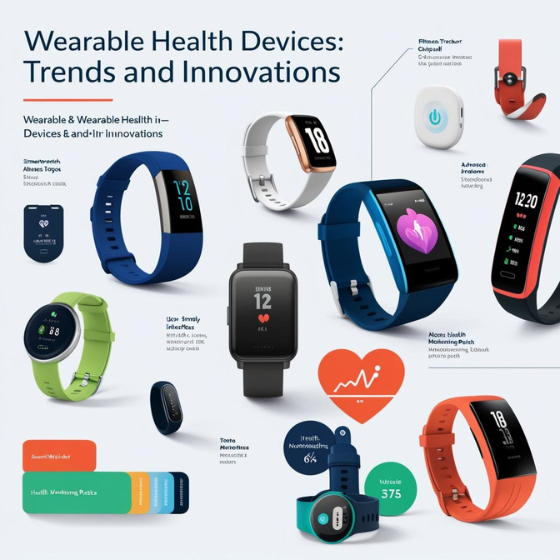Developing Wellness and Fitness Apps: A Comprehensive Guide
Introduction:
Did you know that the global wellness and fitness app market was valued at $4.4 billion in 2020 and is expected to grow at a rate of 21.6% annually? With the increasing popularity of health-conscious living and the growth of wearable technology, fitness apps are rapidly becoming an essential part of modern life. But what does it take to create an app that meets the needs of today’s health-driven consumers?
In this comprehensive guide on developing fitness apps, we will delve into the process of app creation, from idea conception to launch, and how to ensure your app delivers real value to users. By the end, you’ll understand the key features to include, the technologies behind these apps, and how to approach development to ensure your app stands out in a highly competitive market.
What You’ll Gain From This Blog:
- Insights into the current trends in wellness and fitness app development.
- Key features that make fitness apps successful.
- Best practices for user experience and design.
- How to align your app with emerging technologies like AI and IoT.
- How to monetize your wellness app for long-term success.
Understanding the Wellness and Fitness App Market
The rise of fitness apps is no coincidence. People are more health-conscious than ever, and wellness apps are enabling users to track their progress, set goals, and maintain motivation.
Key Market Trends Driving Wellness and Fitness Apps:
- Wearable Integration: Devices like fitness trackers and smartwatches are now able to integrate directly with fitness apps, providing real-time data for better insights.
- Personalization: Users want apps tailored to their specific goals, fitness levels, and preferences. Personalization is key to engaging users and enhancing the app’s appeal.
- Social Sharing: Fitness is becoming a social activity, with many apps offering social features to help users stay motivated.
- Subscription Models: Many fitness apps are adopting subscription-based models, offering exclusive features and content.
These trends present an exciting opportunity for app developers to create innovative solutions that meet the growing demand for wellness and fitness tools.
Essential Features for Fitness Apps
When developing wellness and fitness apps, the features you include will directly impact the user experience. Let’s look at the must-have features for your app:
- User Profiles & Personalization
- Allow users to create profiles that include personal information, fitness goals, preferences, and progress. Personalization is crucial for keeping users engaged and motivated.
- Workout Plans & Tracking
- Offer customizable workout plans that users can follow. Provide features that track their progress, whether it’s through manual entry or syncing with wearable devices.
- Data tracking tools should provide insights into calories burned, exercise duration, and heart rate.
- Nutrition Guides & Meal Tracking
- Many users are interested in tracking their diet alongside their fitness routines. Including a nutrition guide and meal tracker can make your app more comprehensive and appealing.
- Progress & Analytics
- Display visual progress through graphs, charts, or achievement badges to keep users motivated. Real-time analytics help users understand their fitness patterns and adjust their routines accordingly.
- Social Interaction & Community
- Users love sharing their achievements and comparing progress with friends. Integrating social features like challenges, leaderboards, and forums can enhance engagement.
- Integration with Wearables
- Incorporating data from fitness trackers, smartwatches, and other wearables can improve the user experience by providing more accurate and holistic data. Integration with IoT devices is becoming a standard in many fitness apps.
- Gamification
- By adding gamification features like rewards, achievements, and challenges, users are more likely to stay engaged and motivated over time.
Best Practices for Designing Wellness and Fitness Apps
The design of your wellness and fitness app plays a significant role in its success. A well-designed app should be intuitive, visually appealing, and simple to navigate. Here are some best practices:
- Clean & Simple User Interface
- An intuitive UI/UX design ensures users can easily access features without unnecessary complexity. Keep buttons, menus, and options easy to navigate.
- Responsive Design
- Your app should be compatible across different devices, including smartphones, tablets, and wearables. A responsive design will ensure seamless user experiences across all platforms.
- Visual Appeal
- Health and fitness apps should inspire users to take action. Use vibrant colors, motivating imagery, and simple graphics to convey a sense of energy and positivity.
- Minimalistic Design
- Avoid cluttering the interface with too many features or buttons. Focus on the essentials and make the app’s core functions prominent and easy to access.
- Feedback Mechanisms
- Users need immediate feedback on their progress and actions. Real-time data and encouraging messages after completing a task can help maintain motivation.
Technologies That Power Wellness and Fitness Apps
Selecting the right technologies is crucial for building a scalable, efficient, and user-friendly wellness app. Let’s look at the technologies that can make your app stand out.
- Artificial Intelligence (AI)
- AI can be used to personalize fitness plans, recommend workout routines, and even predict user behavior. AI algorithms can analyze user data to offer targeted suggestions based on their performance and goals.
- Internet of Things (IoT)
- IoT allows your app to sync with wearable devices, health monitors, and even smart equipment. This can help users track their activity levels more accurately and provide a better overall experience.
- Cloud Storage
- Cloud storage allows users to save their fitness data and progress across multiple devices. It ensures that their information is always accessible and secure.
- Machine Learning (ML)
- Machine learning can be used to analyze large volumes of user data, offering insights that can help tailor workout plans and nutrition guides based on patterns and preferences.
- Augmented Reality (AR)
- AR can enhance the user experience by allowing users to visualize their workouts, monitor progress in real-time, or engage with virtual trainers.
Monetizing Your Wellness and Fitness App
If you’re thinking about developing wellness and fitness apps for business purposes, monetization is an important consideration. Here are some proven strategies:
- Freemium Model
- Offer basic features for free and charge for premium content, advanced features, or exclusive workout plans. The freemium model encourages a large user base while driving revenue through subscriptions.
- In-App Purchases
- Users can buy workout plans, nutrition guides, or virtual coaching within the app. You can also sell merchandise or fitness equipment as an additional revenue stream.
- Subscription Services
- A subscription-based model ensures recurring revenue. Offer exclusive content like fitness challenges, expert advice, and special classes to incentivize users to upgrade to a premium version.
- Advertising
- You can integrate ads into your app, either as banner ads or video ads that users can skip after a certain time. This is particularly effective if your app has a large, active user base.
- Sponsorships
- Partnering with fitness brands or health-related businesses can provide sponsorships or endorsements. You could feature their products in your app or offer exclusive discounts to your users.
Conclusion
Developing wellness and fitness apps is a dynamic and rewarding field. As more people embrace a health-conscious lifestyle, the demand for apps that offer personalized, data-driven solutions will continue to rise. By focusing on essential features, employing the latest technologies, and ensuring a user-friendly design, your app can stand out in this competitive market.
Remember, a successful wellness app isn’t just about tracking data—it’s about providing value, motivating users, and offering personalized experiences that lead to real, measurable results.
Ready to start developing your own wellness or fitness app? Explore Sodio’s mobile app development services and consult with our experts to take the first step toward bringing your idea to life.
Start building your dream wellness app today! Contact Sodio for a consultation, and let us guide you through the process of developing a fitness app that will make a lasting impact.







